Facilities and Affiliated Centers About the Faculty of Science

- Home
- Facilities and Affiliated Centers
Main Related Facilities
Hydrogen Isotope Research Center
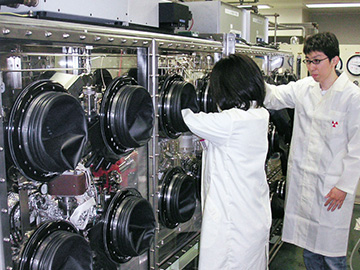
The Center conducts fundamental research to identify the functions of the three hydrogen isotopes—protium, deuterium, and tritium—and to promote their effective use toward the development of fusion energy systems utilizing hydrogen as a clean energy source. Experiments involving tritium (hydrogen-3) can be safely conducted here.
International Research Center for Sustainability
This center integrates research in the humanities, social sciences, and natural sciences to conduct comprehensive studies on economic activities and their environmental impacts in the Japan Sea Rim region and neighboring countries.
Research Advancement Comprehensive Support Center
Natural Science Research Support Unit (Cryogenic Quantum Science Facility)
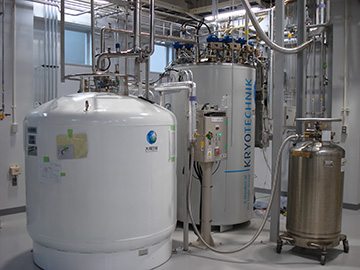
This facility supports education and research by providing liquid nitrogen and liquid helium.
Natural Science Research Support Unit (Instrumental Analysis Facility)
This facility centrally manages advanced analytical instruments and promotes collaborative research and efficient operation.
Natural Science Research Support Unit (Radioisotope Laboratory)
This facility promotes education and research using radioactive isotopes, trace quantities of radioactive materials, and nuclear fuel materials.
Tateyama Facility (Tateyama–Jodo Mountains)
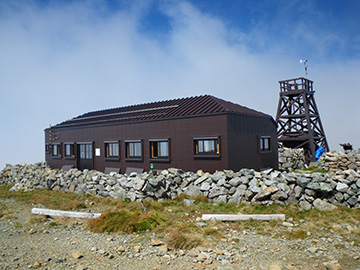
Located near the summit of Mt. Jodo (2,839 m) in the Tateyama Mountain Range, this facility supports a wide range of educational and research activities in atmospheric science, snow and ice studies, and ecology.
Center for Information Infrastructure
High-speed computers installed at the Center support the university’s activities in data processing, simulation, communication, information retrieval, and IT education.
Environmental and Safety Promotion Center
This center detoxifies experimental waste generated within the university and provides consultation and training related to waste management.
Faculty Facilities and Exhibits
Integrated Research Building
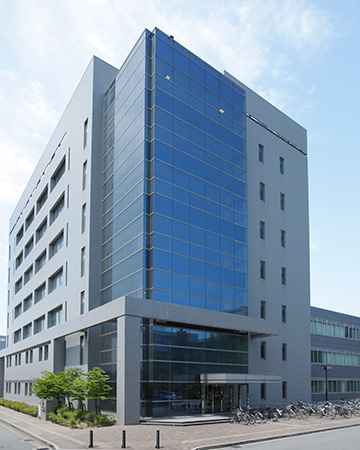
The building houses advanced research equipment managed by Faculty of Science staff and is used extensively for undergraduate research and related activities.
University of Toyama Faculty of Science – Himi Collaborative Research Laboratory (“Himi Lab”)

The Himi Lab was established on April 1, 2011, based on a collaboration agreement between the Faculty of Science, University of Toyama, and the City of Himi. It aims to contribute to the local community through activities in research, education, and public outreach. The laboratory building is located in the former Busshoji Elementary School in Himi City.
Gravitational Wave Experimental Laboratory
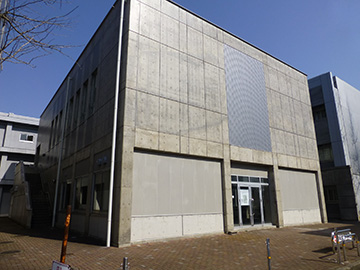
Installed in the multipurpose hall piloti of the Faculty of Science, this laboratory supports gravitational wave observations conducted under the KAGRA Project *(Large-scale Cryogenic Gravitational Wave Telescope). Equipment includes a cleanroom booth, vacuum baking system, and ultrasonic washer.
*About the KAGRA Project
Led by the Institute for Cosmic Ray Research, the University of Tokyo, the KAGRA Project operates and improves a 3-km-long cryogenic gravitational wave telescope constructed in the Kamioka Mine, Gifu Prefecture. By observing events such as black hole collisions, it aims to explore strong gravity and the mysteries of the early universe.
Glass Workshop
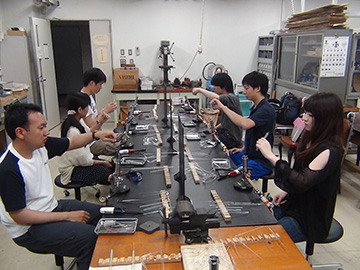
The workshop designs and fabricates glassware for educational and research purposes and provides hands-on training for students, allowing them to experience glass properties and basic glassworking techniques.
Greenhouse
The greenhouse allows controlled cultivation of research plants by regulating temperature, light duration, and other environmental conditions.
Metal Workshop
Equipped with lathes, milling machines, band saws, and drill presses, the workshop enables fabrication with materials such as brass, copper, and acrylic.
Mathematics Library
The Mathematics Library holds more than 700 mathematics-related academic journals, primarily in foreign languages—an extensive collection that is exceptional for a regional university.
Refresh Spaces
Refresh spaces are located on each floor of the Faculty of Science buildings, providing relaxing areas for students.
Giant Specimen: Cedar Root Excavated from Underground
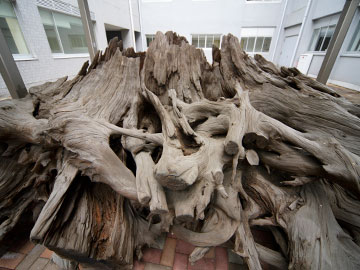
Displayed outdoors under a roof between Buildings A and C, this giant specimen is a cedar root excavated in 1930 from the coastal area of Uozu City, about four meters below sea level. Because the roots were found in their original upright position, it is inferred that the area was once land that later sank or was submerged due to sea-level rise. Radiocarbon dating estimates the root’s age between A.D. 250 and 600, corresponding to Japan’s Kofun period. Of the many roots excavated in 1930, only five specimens remain today, making this an extremely rare exhibit.
Wooden Monument “Bookmark of the Wind 2002-II”
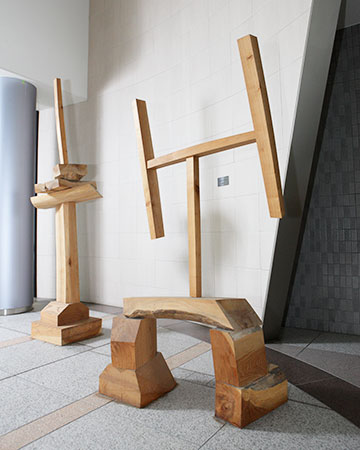
A large cherry tree once stood on the Faculty of Science grounds, blooming beautifully every spring and delighting students and staff. When the site was redeveloped to build the current Faculty of Science buildings and the Integrated Research Building, the tree had to be cut down. To preserve its memory, the wood was entrusted to local sculptor Masaya Kato, who created this pair of sculptures titled “Bookmark of the Wind 2002-II.” The two pieces represent a man and a woman and form part of Kato’s Bookmark of the Wind series.